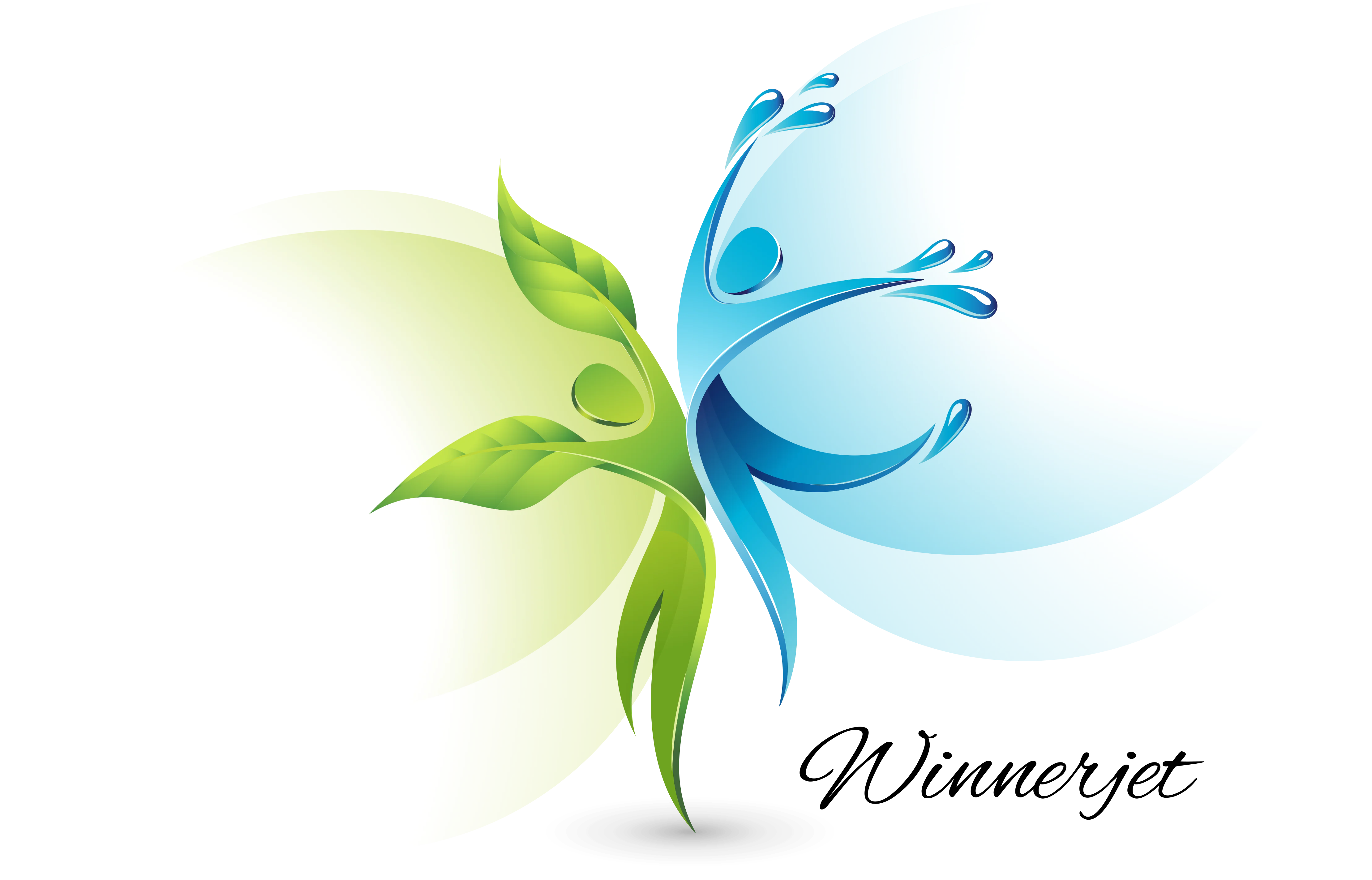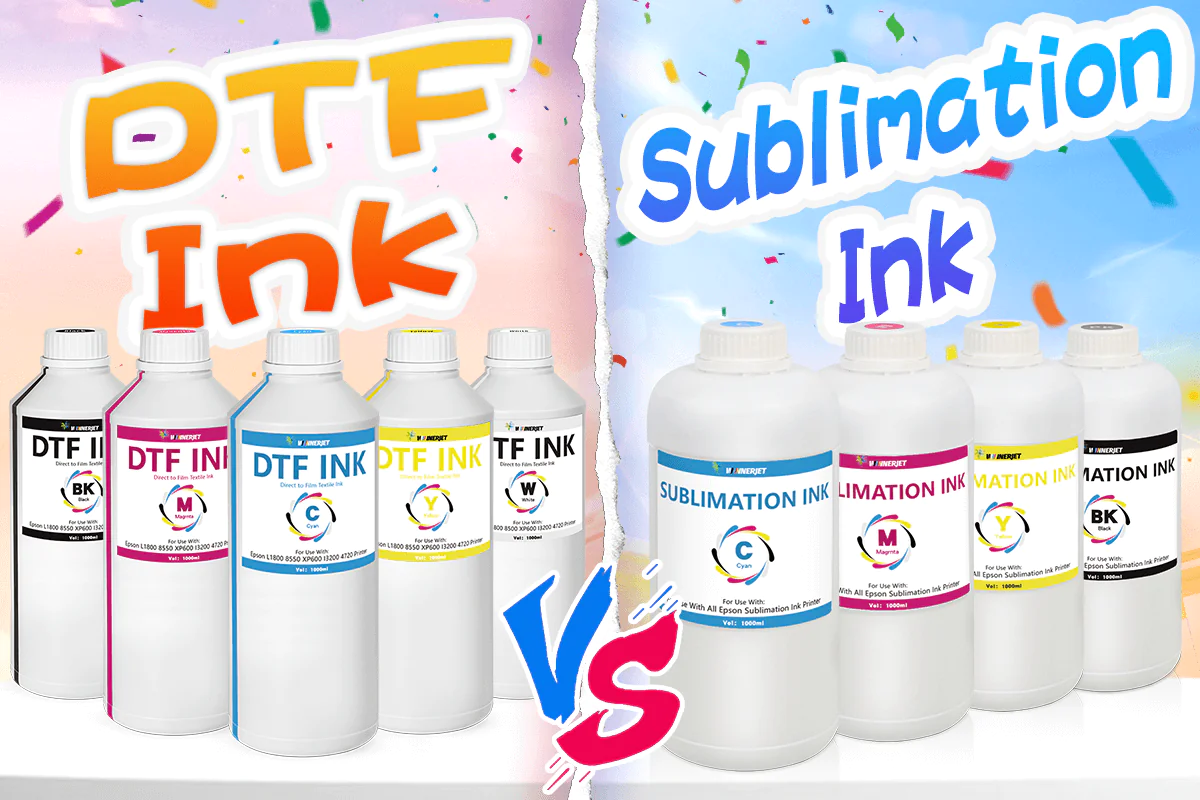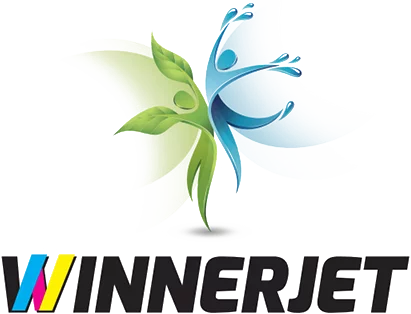DTF Ink and Sublimation Ink are two popular printing methods currently occupying an essential place in the vibrant world of textile printing, each with unique advantages and limitations that affect their range of applications, print results, and cost of doing business. Choosing the right ink technology is critical to achieving the desired results, and this article takes an in-depth look at the differences between these two inks, providing a detailed comparison that will help businesses and hobbyists make an informed decision.
Understanding DTF and Sublimation Inks
What is DTF Ink?
Direct-to-film (DTF) Ink are a popular printing technique in which a design is printed onto DTF Film via an inkjet printer. Then, the design is transferred directly onto various materials via a heat press film.
What is Sublimation Ink?
Sublimation Ink is a specialized dye used in the sublimation printing process that converts solid dye particles into a gas without going through a liquid stage. This allows the dye to penetrate and bind to the polyester fibers, producing a vibrant, long-lasting print.
Differences Between DTF Ink and Sublimation Ink
Comparison of Advantages and Disadvantages (DTF Ink vs Sublimation Ink)
| Compare | DTF Ink | Sublimation Ink |
| Advantages | 1. Wide range of application materials 2. Resistant to washing and fading 3. Low cost of consumables | 1. Vivid colours 2. Printing process environmentally friendly 3. Printing is long-lasting and colourfast |
| Disadvantages | 1. Higher initial equipment costs 2. Complex ink learning curve 3. High maintenance requirements | 1. Limited to polyester and lightweight fabrics 2. Higher material costs for long-term use 3. Unsuitable for dark coloured or cotton fabrics |
Other comparative analyses
| Feature | DTF Ink | Sublimation Ink |
| Suitable For Printer | For Epson 1430 L1800 1390 L805 P400 P640 P600 P700 P800 R1800 R1900 R2000 R2400 4800 R3000 R3880 F2000 F2100 F2200 XP-15000 XP-600 ET-8500 8550 L18050 7890 9890 7900 9900 P5000 P6000 P7000 P8000 P9000 4720 I3200 I1600 Printer For Mimaki PHT50 TXF150-75 TFX300-75 Printer | For Epson ET 2800 2803 15000 2400 2720 3850 4800 4850 8550 7750 4700 2650 WF 2540 2750 2760 2830 2850 2860 3620 3640 3720 4730 4833 7210 7610 7620 7710 7720 7820 7840 I3200 4720 XP600 T3000 T5000 T7000 T3070 T5070 T7070 T3200 T5200 T7200 T3270 T5270 T7270 Printer For Sawgrass SG 400 800 500 1000 Printer |
| Material Compatibility | Wide range (cotton, polyester) | Limited (polyester, polymer-coated) |
| Vibrant and detailed | Vibrant and detailed | Extremely vibrant and sharp |
| Durability | Good fade resistance | Excellent fade resistance |
| Setup Cost | Moderate | Higher |
| Eco-friendliness | Moderate | High |
| Equipment Cost | Higher | Lower |
Industry Application Comparison
| Compare | DTF Ink | Sublimation Ink |
| Application | Clothing industry / Home textiles / Sportswear and team wear / Personalised gifts / Souvenir backpacks shoes / Interior decoration / Label Identification | Clothing industry / Home decoration / Sportswear / Personalised gifts / Outdoor advertising / Textile industry / Ceramics and hard materials / Corporate goods |
New Trends in Textile Printing
1.Sustainable Practices
Merchants are increasingly focusing on environmentally friendly processes and materials, such as using water-based inks and reducing waste through digital printing technology.
2.Customization and Personalization
With the advancement of printing technology, companies can offer more personalized products to meet individual preferences and unique designs.
3.Hybrid Printing Technology
Combining different printing methods, such as DTF and sublimation, allows for greater flexibility and innovation in design and material use.
4.Smart Textiles
Integrating intelligent technologies such as sensors and conductive fibers into fabrics is becoming increasingly common, paving the way for interactive clothing.
5.Advances in Digital Printing Technology
The speed and quality of digital printing continue to improve, making it more popular and cost-effective for high-resolution printing on a wide range of materials.
How to Choose the Right Ink (DTF Ink VS Sublimation Ink)
Considerations
- Budget.Evaluate initial setup costs and ongoing expenditures for materials and maintenance.
- Material Compatibility. Consider the fabric or substrate you will use (e.g., polyester for sublimation, various materials for DTF).
- Desired Results. Determine the print quality, durability, and appearance you want.
Case Examples
Customized Apparel for Small Businesses: A start-up business uses DTF because it can print on various materials to provide a customized clothing line with unique designs.
Sportswear Manufacturer: A company chooses heat sublimation technology because it can print vibrant colors on polyester and is durable, making it ideal for sportswear.
Advice for Decision Making
- Assess your needs. Prioritize which factors (e.g., cost, versatility, color quality) are most important to your business.
- Experiment and test. Try both methods in small batches to see which meets your expectations regarding quality and efficiency.
- Consult the experts. Consult with industry professionals or attend seminars about best practices and innovations.
- Create a development plan. Choose an approach that aligns with your long-term business goals and potential new product line expansions.
Conclusion
Overview of key points
DTF inks and sublimation inks have unique advantages and limitations in textile printing.DTF inks are versatile, durable, and suitable for many materials but require high initial investment and maintenance. Sublimation inks are colorful and environmentally friendly, but they are limited to polyester and lightweight fabrics, and production costs will increase later.
Looking to the future
As DTF and sublimation printing will evolve as technology advances and offer more innovative solutions. As an ink manufacturer, Winnerjet offers in-house developed and produced DTF Ink and Sublimation Ink, which we continually improve to increase their environmental friendliness, material compatibility, and cost-effectiveness to further expand their use in the textile industry. We also provide technical support and customer service throughout the entire process. Suppose you still choose between the powerful and cost-effective DTF and Sublimation Ink. In that case, our experts are ready to provide professional advice on achieving outstanding print results and expanding your business.


